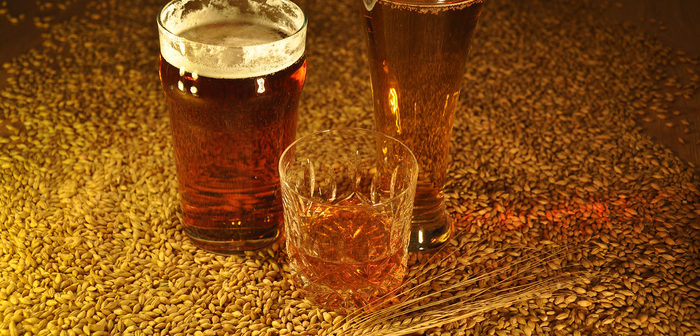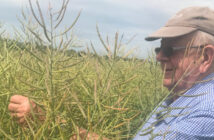UK spring barley may be facing a big harvest in 2020, if more of it is grown due to difficulties planting winter cereals, but there are opportunities for the crop. That was the message from a malting barley conference held in Newmarket, Suffolk, recently.
Organised by Syngenta, company variety specialist Samantha Brooke said the UK produces some of the best quality malting barley in the world, putting us in a strong position to sell not only into home markets but also for export.
“The availability of dual-purpose spring malting barley varieties, which are suitable for distilling and brewing, gives growers additional flexibility,” she added, “just at a time when distilling for whisky production and the amount of malted barley included in certain ales are both increasing.”
Jonathan Roberts, UK barley procurement manager for Boortmalt, which operates malting plants at Bury St Edmunds in Suffolk, at Knapton in Yorkshire and in Scotland, agreed that the distilling market is booming. During 2020, he predicted that purchases of the dual-purpose spring barley variety Laureate will continue to increase.
He said: “The distilling market isn’t slowing down, so the role of dual-purpose varieties is very important. Knapton supports the distilling market in Scotland. Bury St Edmunds is primarily for brewing and export. Being able to pull in Laureate and look at brewing and distilling offers us an opportunity and an opportunity for our growers.”
Sam Colman, Boortmalt key account manager, who sells malt to end users, said: “There is continued strong demand for British malt from both global and local brewers.”
Malt use had previously declined, he noted, but has now increased again, and the UK’s long history of producing quality malt gives us a good reputation on the world stage. As examples, he said Laureate malted in East Anglia goes to Japan for distilling, and several Boortmalt brewing customers have a blend that includes Laureate.
Highlighting the importance of protecting yield and quality to capitalise on spring barley opportunities, Syngenta business manager in the Eastern counties, Mike Welby, said managing disease and managing brackling of barley stems, so that ears remain intact, are both paramount.
“To manage brackling, trials have shown that in a dry year you don’t want to apply too much plant growth regulator,” said Mr Welby. “Trials have also shown that the SDHI-based fungicide, Elatus Era, applied at the T2 spray timing has been seen to reduce brackling.
“Elatus Era is a very good barley option and is fully approved for use in malting barley. It provides complete leaf protection, and it contains the azole fungicide, prothioconazole, which is well-recognised for use in barley.
“Due to the loss of the multi-site fungicide chlorothalonil, a particular disease to be aware of this year will be Ramularia. Chlorothalonil can only be used up until 20 May 2020. However, a trial near Bury St Edmunds has shown a similar yield response from including an alternative multi-site fungicide, folpet,” he added.




